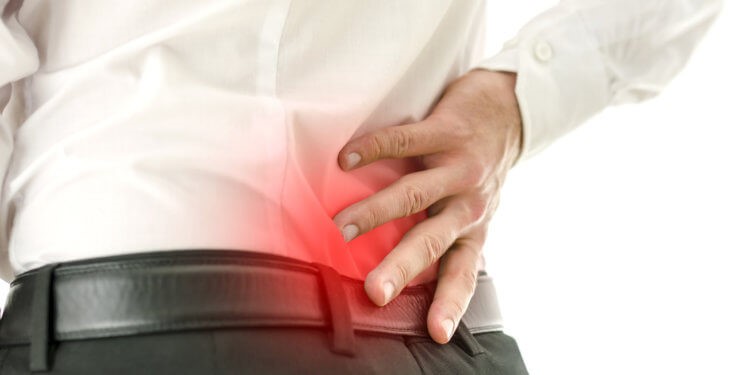Lumbago is a strong, stabbing pain around the lumbosacral (L-S) vertebrae. It is sometimes referred to as a “shot” because it appears suddenly. The cause of lumbago is excessive tension of the discs, which leads to pressure on the nerves and the appearance of characteristic symptoms. In the event of this complaint, urgent professional help is usually required. Emergency treatment for lumbago is to reduce muscle tension and minimize pain. It is important to avoid sudden changes in body position and the use of positions where pain is minimized. Pharmacotherapy allows to reduce pain and improve patient mobility. Once the symptoms have subsided, the specialist should undertake diagnostic work to determine the cause of the lumbago.
Diagnosis of lumbago
Diagnosis is based mainly on the exclusion of diseases that require urgent medical intervention. To initially diagnose lumbago in a doctor’s office, all you need to do is perform a Laseque test. During the examination, the patient is lying on his back and the examiner lifts the lower limb of the subject, standing at the knee joint. When there is pain in the spine around the lumbosacral segment, the specialist measures the angle between the raised limb and the table on which the patient lies. Under suitable conditions, this angle should be about 80-90 degrees. The reduction in angle in the Laseque test indicates dysfunction of the L-S segment of the spine.
The angle between 30-60 degrees, combined with pain appearing in the lumbar spine, is interpreted as lumbago or acute back pain. On the other hand, the angle between 60 – 90 degrees, caused by “shooting pain” in the back, is interpreted as lumbago, a mild condition.
How to treat lumbago?
Emergency treatment for lumbago involves reducing muscle tension and pain through the use of pharmacotherapy.
It is important that treatment for lumbago does not end with the use of painkillers, anti-inflammatory drugs and those that reduce muscle tension, but continue with the use of individually selected rehabilitation.
Kinesitherapy is the main treatment for lumbago. Active exercises are used to stretch the muscles of the back, exercises to strengthen the abdominal muscles and more. Exercises for relaxation and relaxation in the water are recommended. The aquatic environment provides almost complete relief, relaxation and stretching of pathologically tense muscles. The patient can use manual therapy or massage. In addition, physiotherapy is usually recommended for lumbago, such as laser therapy, magnetic therapy, local cryotherapy or electrotherapy.
In addition, it is important for the patient to take a proper posture on a daily basis to protect the spine from overload and to take care of ergonomics in the workplace. In turn, after work, it is advisable to have a position that protects the spine and in which the pain is reduced.







